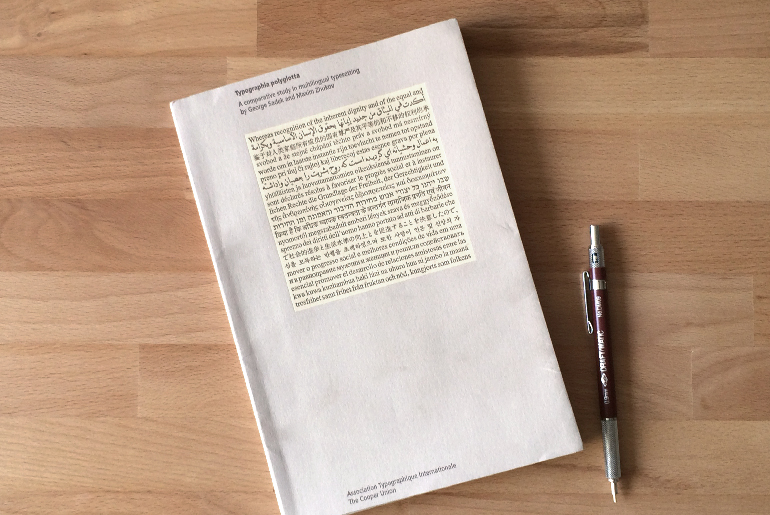Part of my research was to look for books on designing with Arabic type, or designing Arabic type. Well, as expected, the books in the image above are almost all the books available on the subject, maybe couple more. In addition, maybe there are few more but they are not written in English, nor Arabic.
In all cases, this research was interesting. One finding is that there are not many of them, comparing to the books on Latin/Roman typography and type design. In addition, the 12 books above cost more than $800, excluding the cost of delivery/shipping. So, the average price for a book on Arabic typography is almost $70, which is expensive. Just for the sake of comparing prices, I went to Amazon.com and searched for books on Latin/Roman typography and calculated the accumulated price of 50 books, and the total was $740, which means that the book average price is about $26. So, the problem is not only the lack of resources on Arabic type, its also the fact that they are expensive!
Anyways, in the list below are you can find the books I found on Arabic typography, as they are numbered in the image above. If you are interested in buying any of them, just click on the title:
- Sculpting Type
- Arabic Type Design for Beginners
- Arabic Font Specimen Book
- Typographic Matchmaking in the City
- Typography Matchmaking
- Arabic Typography
- Arabesque 1
- Arabesque 2
- Writing Arabic
- Talking About Arabic
- Cultural Connectives
- Arabic for Designers
If you know more books that you would like to add to the list, please let me know! I am looking for more resources!






